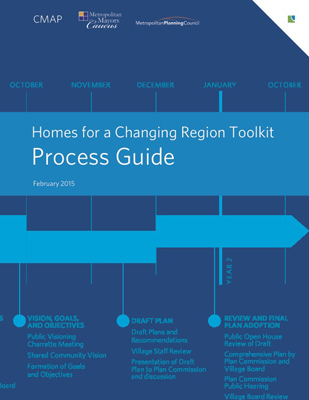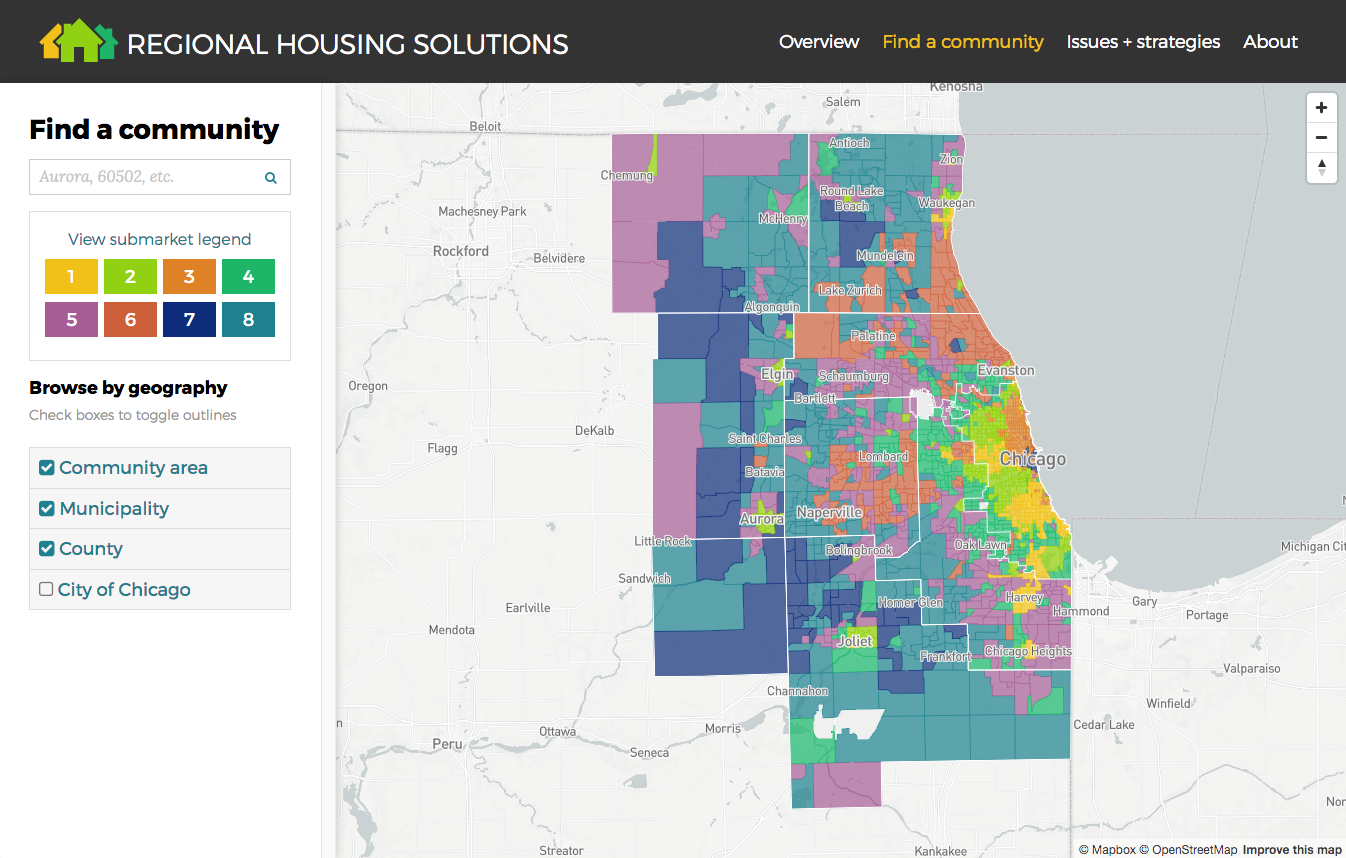Methodology
As discussed in detail in the project overview, the Chicago Metropolitan Agency for Planning (CMAP), Metropolitan Mayors Caucus (MMC), and Metropolitan Planning Council (MPC) worked in partnership on this study since 2015. The project evolved through two separate phases, both generously supportive by the Searle Funds at The Chicago Community Trust.
Phase 1
Through mid-2016, the Homes team worked closed with DePaul University’s Institute for Housing Studies (IHS) to identify the geography and characteristics of eight distinct subregional housing markets across northeastern Illinois. The purpose of the work was to understand what parts of the region had similar housing market characteristics and then use those common areas as the basis for phase 2 work.
To identify these similar areas, or submarkets, IHS employed a data clustering technique to compare, regardless of physical proximity, different geographic units that shared similar traits. Using detailed statistical information regarding housing stock and affordability, housing market activity, resident demographics, and socioeconomic indicators, IHS placed all U.S. Census tracts within the seven-county Chicago region into one of eight groupings, each having similar housing and socioeconomic characteristics. More than 40 different variables fed into the analysis, often from the U.S. Census Bureau or IHS proprietary data. The process ended up grouping together census tracts with the greatest similarities, with different submarkets most commonly defined by age of the unit, household income, population growth, and economic hardship indicators such as unemployment and foreclosure.
Download a list of all the data sources used for the submarkets (Excel spreadsheet, 119 KB)
Download a detailed description of the clustering process (PDF, 4.1 MB)
Phase 2
With the submarkets defined, the Homes team then used those submarkets to undertake research on each of the submarkets, seeking to answer three questions for each.
- What were the common housing problems in neighborhoods within the submarket?
- What ideas or best practices in housing development might be applied to neighborhoods within the grouping?
- What housing strategies had already been successful in similar neighborhoods?
To answer these questions, the team relied on a number of resources:
- First, the existing compilation of best practices in Home Grown provided the team with a cadre of successful strategies.
- Second, work on Homes plans for more than 40 different municipalities provided a starting point for understanding how issues and strategies might be arrayed across submarkets.
- Third, the Metropolitan Mayors Caucus has conducted research on best practices for a number of different housing topics in recent years. Finally, and most significantly, the team conducted interviews or focus groups with more than 50 experts. Interviewees included relators, non- and for-profit developers, lawyers, housing policy experts, market analysts, municipal staff, and elected officials.
The team researched both issues and best practices from the interviews and resources, compiling the findings into the summaries found on this website.
 Regional Housing Solutions
Regional Housing Solutions




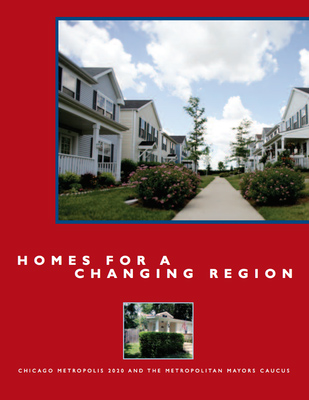 Homes for a Changing Region
Homes for a Changing Region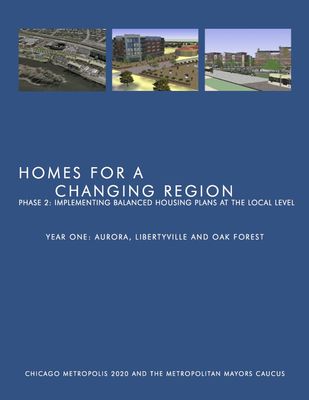 Homes for a Changing Region, Year One: Aurora, Libertyville and Oak Forest
Homes for a Changing Region, Year One: Aurora, Libertyville and Oak Forest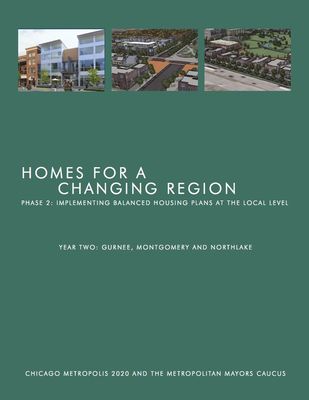 Homes for a Changing Region, Year Two: Gurnee, Montgomery and Northlake
Homes for a Changing Region, Year Two: Gurnee, Montgomery and Northlake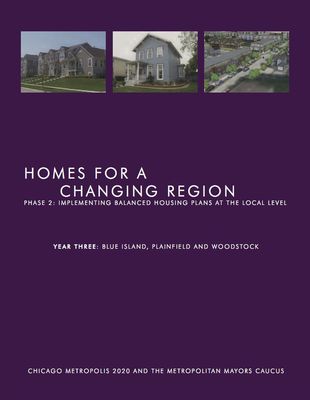 Homes for a Changing Region, Year Three: Blue Island, Plainfield and Woodstock
Homes for a Changing Region, Year Three: Blue Island, Plainfield and Woodstock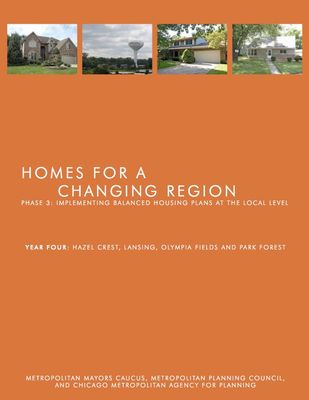 Homes for a Changing Region, Year Four: Hazel Crest, Lansing, Olympia Fields and Park Forest
Homes for a Changing Region, Year Four: Hazel Crest, Lansing, Olympia Fields and Park Forest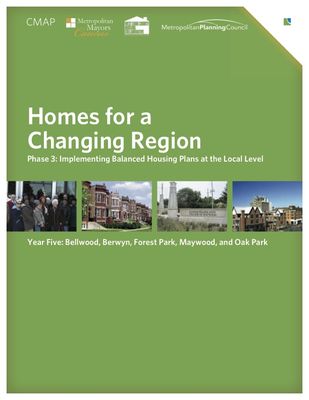 Homes for a Changing Region, Year Five: Bellwood, Berwyn, Forest Park, Maywood, and Oak Park
Homes for a Changing Region, Year Five: Bellwood, Berwyn, Forest Park, Maywood, and Oak Park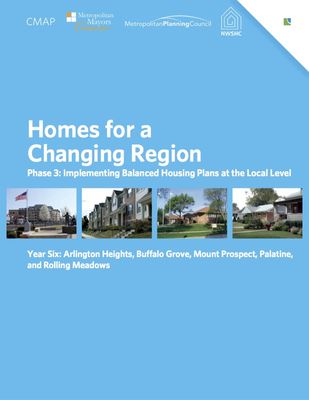 Homes for a Changing Region, Year Six: Arlington Heights, Buffalo Grove, Mount Prospect, Palatine, and Rolling Meadows
Homes for a Changing Region, Year Six: Arlington Heights, Buffalo Grove, Mount Prospect, Palatine, and Rolling Meadows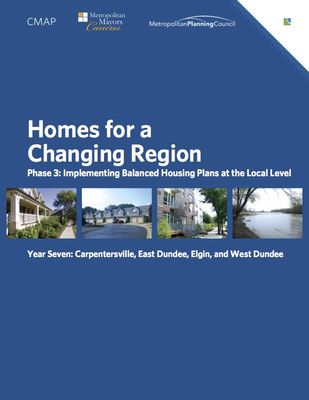 Homes for a Changing Region, Year Seven: Carpentersville, East Dundee, Elgin, and West Dundee
Homes for a Changing Region, Year Seven: Carpentersville, East Dundee, Elgin, and West Dundee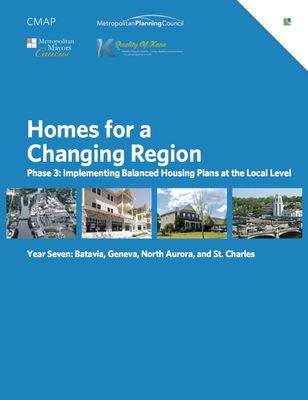 Homes for a Changing Region, Year Seven: Batavia, Geneva, North Aurora, and St. Charles
Homes for a Changing Region, Year Seven: Batavia, Geneva, North Aurora, and St. Charles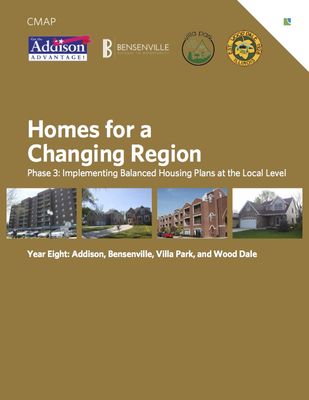 Homes for a Changing Region, Year Eight: Addison, Bensenville, Villa Park, and Wood Dale
Homes for a Changing Region, Year Eight: Addison, Bensenville, Villa Park, and Wood Dale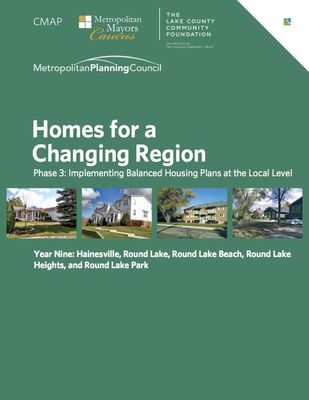 Homes for a Changing Region, Year Nine: Hainesville, Round Lake, Round Lake Beach, Round Lake Heights, and Round Lake Park
Homes for a Changing Region, Year Nine: Hainesville, Round Lake, Round Lake Beach, Round Lake Heights, and Round Lake Park Homes for a Changing Region, Year Ten: Glendale Heights, Hanover Park, and West Chicago
Homes for a Changing Region, Year Ten: Glendale Heights, Hanover Park, and West Chicago